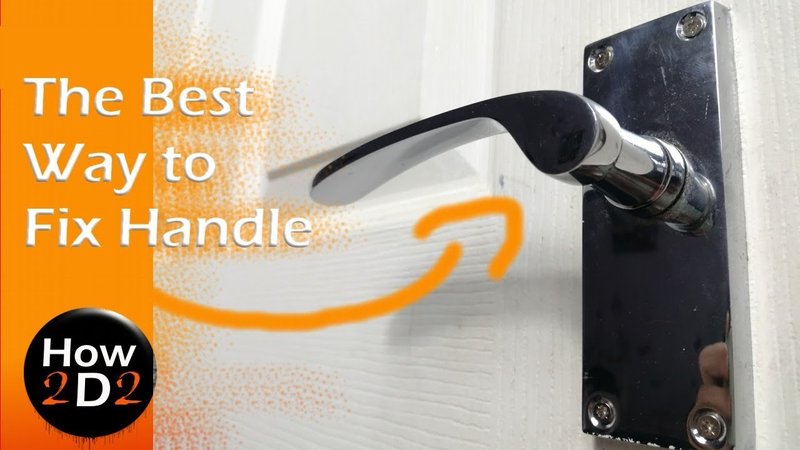
Powder coating is a popular finish for door handles because it’s durable and looks great. But, just like a good paint job on a car, it can wear down over time. If you have a powder-coated door handle from a brand like Kwikset or Schlage, you might be wondering how to address chipping and protect your investment. Luckily, troubleshooting these issues can often be easier than you think. Let’s dive into how you can tackle this problem head-on.
Understanding Powder Coating
Before we jump into troubleshooting, let’s clarify what powder coating really is. Think of it as a superhero cape for your door handle. This finish is created by applying a dry powder that is then cured under heat, forming a hard layer. This process provides a strong, protective coating against rust, scratches, and other wear and tear.
However, nothing lasts forever, and chipping can occur due to various reasons including improper installation, exposure to extreme weather, or even regular wear from daily use. Each small chip compromises not only the appearance but also the integrity of the handle. So, here’s the thing: understanding how this coating works will help you figure out why it might be failing.
Identifying The Cause of Chips
So, how do you figure out why your powder-coated door handle is chipping? Start by examining the handle closely. Look for small scratches or gouges that could indicate the cause. Here are a few common culprits:
- Impact Damage: If something heavy hits the handle, it can chip off the powder coating.
- Environmental Factors: Exposure to moisture, humidity, or salt can lead to corrosion under the coating.
- Poor Application: If the powder was not applied correctly, bubbles may form and lead to chips.
To truly diagnose the problem, consider your handle’s location. Is it exposed to the elements? Was it recently installed? Keeping a close eye on the handle’s environment can provide clues to its condition.
Repairing Chipped Powder Coating
Once you identify the problem, it’s time to think about repairs. Luckily, you can often fix minor chips without replacing the entire handle. Here’s a simple approach:
1. Clean the Area: Start by cleaning the chipped area with soap and water. Allow it to dry completely.
2. Sand the Chip: Use fine-grit sandpaper to smooth the edges around the chip. This helps the new coating adhere better.
3. Touch Up Paint: Purchase a touch-up paint that matches your handle’s color. Many manufacturers offer this option.
4. Apply the Paint: Carefully apply the paint to the chipped area, following the instructions on the product. Allow it to cure as directed.
This process can be surprisingly satisfying! You get to see your handle return to its former glory without a lot of fuss.
Preventing Future Chips
Now that you’ve repaired the handle, let’s ensure it stays looking good. Here are some proactive steps:
- Avoid Heavy Impacts: Be mindful when closing doors, especially if you have kids or pets running around.
- Regular Cleaning: Regularly clean the handle to remove dirt and moisture buildup.
- Protective Coating: Consider applying a *protective sealant* over the powder coating to provide additional protection.
By taking these steps, you help safeguard against future damage, extending the life of your handle. Remember, a bit of care goes a long way!
When to Replace the Handle
Sometimes, despite your best efforts, the damage may be too extensive to repair. If you notice rust or deep chips that can’t be fixed with touch-up paint, it might be time to consider a replacement. Here are some signs that it’s time to say goodbye to your old handle:
- Extensive Corrosion: If rust is creeping under the coating, it can weaken the handle.
- Structural Damage: If the handle feels loose or wobbly, that’s a red flag.
- Discoloration: If the finish has faded or discolored significantly, it may be time for a new look.
Replacing the handle can seem daunting, but it can also be an opportunity to upgrade to a more durable model or a new style that fits your décor better.
Choosing a Durable Replacement Handle
If you decide to replace your door handle, picking the right one is crucial. Look for options that offer a strong powder-coated finish along with a good warranty. Brands like Kwikset and Schlage offer solid options that stand the test of time. Here are a few things to consider when shopping for a new handle:
- Material Quality: Handles made from solid materials like brass or stainless steel tend to last longer.
- Finish Options: Choose a powder-coated finish for added durability, and check for color options that match your aesthetic.
- Ease of Installation: Some handles come with easy installation features that can save you time.
With a little research, you’ll find a replacement that meets your needs without sacrificing style.
Caring for your powder-coated door handle might seem like a small task, but it can make a big difference in the long run. By understanding the causes of chipping, knowing how to repair minor issues, and taking action to prevent future damage, you can keep your door handle looking great. Always remember: prevention is key. With the right care and occasional touch-ups, your door handle can stay in top shape for years to come. Embrace the small maintenance responsibilities and enjoy the beauty of your home without worrying about those pesky chips!
